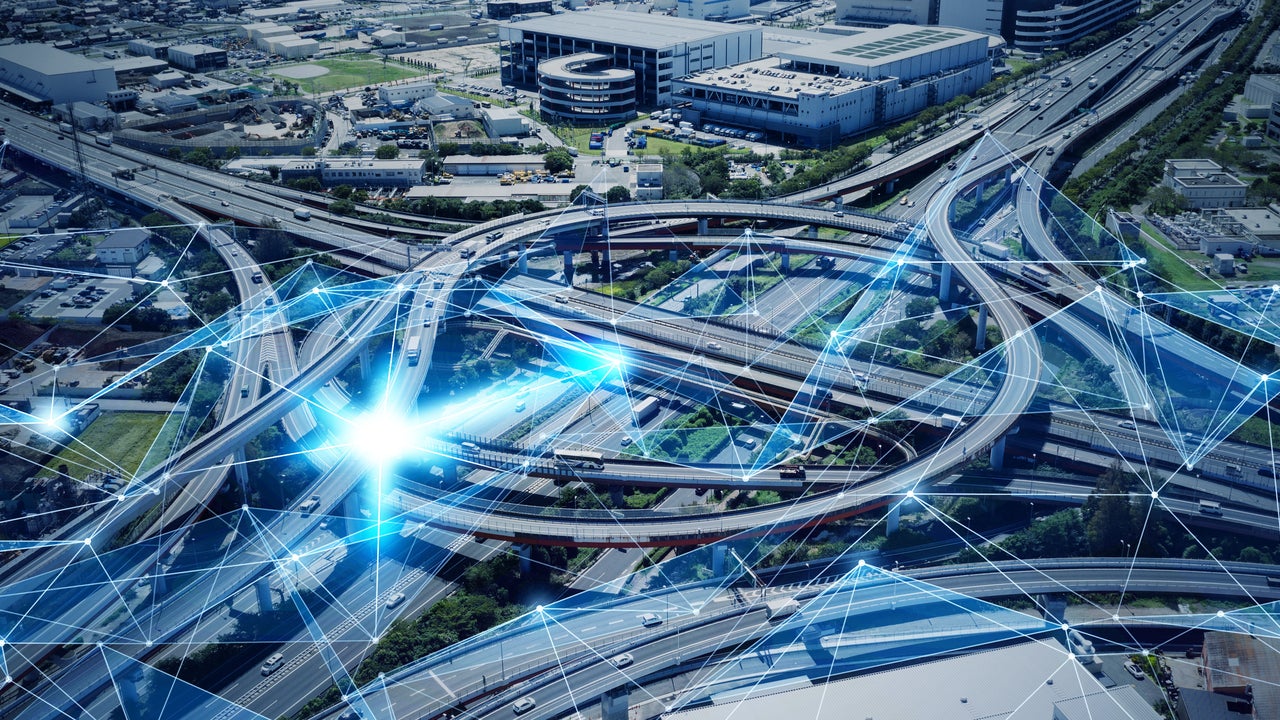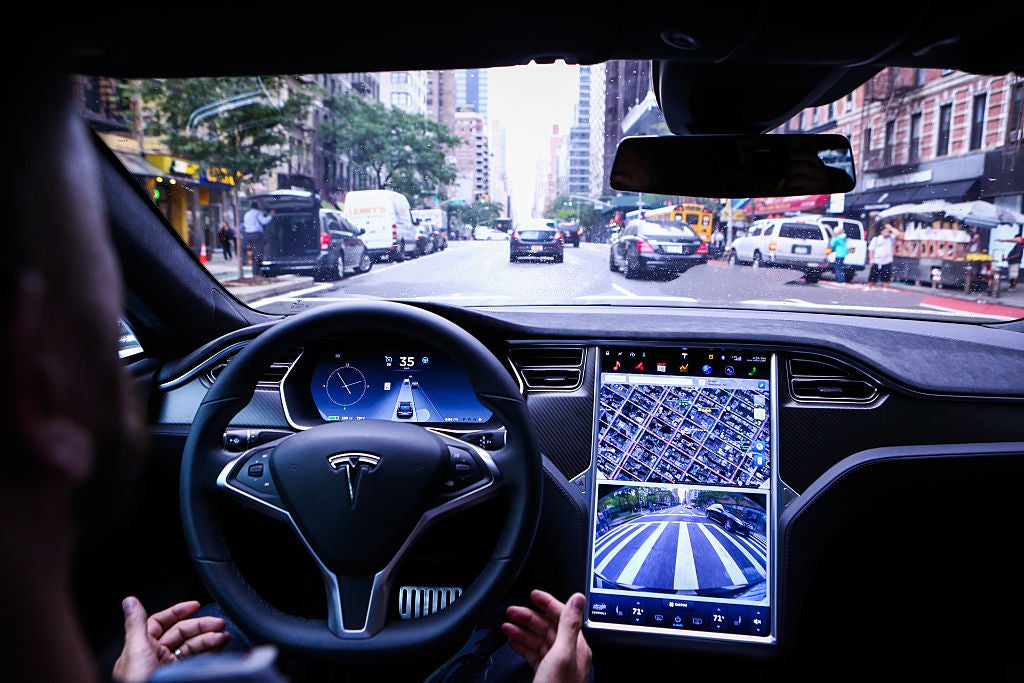
Verdict lists five of the most popular tweets on future infrastructure in Q4 2021 based on data from GlobalData’s Construction Influencer Platform.
The top tweets are based on total engagements (likes and retweets) received on tweets from more than 150 infrastructure experts tracked by GlobalData’s Construction Influencer platform during the fourth quarter (Q4) of 2021.
The most popular tweets on future infrastructure in Q4 2021: Top five
1. Paula Piccard’s tweet on floating vehicle concept
Paula Piccard, a digital influencer and consultant, shared a video on an autonomous floating vehicle concept that could become a car of the future. The vehicle concept is called Float and was designed by Yuchen Cai, a graduate of the Shanghai Jiao Tong University. Float does not have any wheels and no front or back. It is made of pods that fit together with magnetisation enabling a number of people to travel together.
The autonomous vehicle is made of glass that can change to hide the interiors or make them visible. The concept won first place at a design competition conducted by car manufacturer Renault and the University of the Arts London.
Username: Paula Piccard
How well do you really know your competitors?
Access the most comprehensive Company Profiles on the market, powered by GlobalData. Save hours of research. Gain competitive edge.

Thank you!
Your download email will arrive shortly
Not ready to buy yet? Download a free sample
We are confident about the unique quality of our Company Profiles. However, we want you to make the most beneficial decision for your business, so we offer a free sample that you can download by submitting the below form
By GlobalDataTwitter handle: @Paula_Piccard
Likes: 76
Retweets: 141
2. Jean-Baptiste Lefevre’s tweet on futuristic public road transportation concept
Jean-Baptiste Lefevre, chief digital and social media officer at marketing and PR agency ChoYou, shared a video of a futuristic public road transportation concept that travels above cars and easily passes through traffic congestion. Developed by innovative engineering company Dahir Insaat, the concept features gyrocars or pods that are designed to adapt to traffic. The pods are balanced on gyroscopes and hoisted on flexible legs that can expand and elongate, which enables them to navigate through obstacles on the road.
The design enables the pods to pass above accident sites or below bridges. The pods are powered by solar energy and travel on specially designed steel rails, which can be integrated into existing road infrastructure. The passengers can sit in rows in the pods or within luxury pods that are equipped with salons, lounges, and TVs. The gyrocars can also be modified into emergency vehicles to decrease response time. Models of the design are currently being developed and tested.
Username: Jean-Baptiste Lefevre
Twitter handle: @jblefevre60
Likes: 120
Retweets: 79
3. Ronald van Loon’s tweet on Mexico’s plan to develop the world’s first Hyperloop lines
Ronald van Loon, principal analyst and CEO of the Intelligent World, an influencer network that connects businesses and experts to new audiences, shared a video of Mexico’s plan to develop the world’s first Hyperloop lines. The transportation system will be named Mexloop. Mexican studio FR-EE won a contest to design the Hyperloop system and will work with Hyperloop technology developer Virgin Hyperloop to develop the project.
Mexloop will reduce travel time and enable people to travel from various parts of the country including Mexico City, Queretaro, Leon and Guadalajara. The system will travel at speeds of 600 miles per hour (mph) (965km/h) reducing the travel time from Mexico City to Guadalajara from six hours to 27 minutes. The Hyperloop hub in Mexico City could be attached to the international airport and could even be incorporated with drone rides.
Username: Ronald van Loon
Twitter handle: @Ronald_vanLoon
Likes: 81
Retweets: 37
4. Harold Sinnott’s tweet on futuristic commuting concepts
Harold Sinnott, a digital consultant and technology influencer, shared a tweet on future commuting concepts of travel by sea and air. The first concept is a 100% electric boat-plane hybrid named Seaglider that skims over water at up to 290km/h. The plane floats over the water on a cushion of air created by its wings, which makes it highly efficient and provides a range of 290km.
Developed by aerospace start-up Regent, the plane can sit in water at a port, similar to a boat. The Seaglider can travel six times faster than a ferry and has half the operating costs of an aeroplane. It has the potential to transform sea lanes into commuting routes.
Another concept detailed in the video is a fully electric autonomous flying drone named Cadillac. Developed by automaker General Motors, the drone can carry passengers between city rooftops at speeds of up to 88km/h.
Username: Harold Sinnott
Twitter handle: @HaroldSinnott
Likes: 65
Retweets: 61
5. Dr. Sally Eaves’ tweet on the benefits of cellular vehicle-to-everything (C-V2X) communications
Dr. Sally Eaves, senior policy advisor at cybersecurity think tank Global Foundation for Cyber Studies and Research, shared an article from telecommunications provider Spirent on the benefits offered by cellular vehicle-to-everything (C-V2X) communications. C-V2X is a connectivity platform designed to enable communication between vehicles and road infrastructure to other road users and cloud-based services. It has the potential to transform the transportation sector by offering greater connectivity, improved safety, traffic efficiency and a cleaner environment.
The convergence of 5G and 4G/LTE networks enables the transmission of connected vehicle data between the two networks. The strict latency requirements of C-V2X with regard to safety applications, however, remains a challenge especially when a high volume of vehicles try to send and receive data at the same time. Furthermore, the security of the networks and devices that support C-V2X remains a top priority.
Spirent is designing C-V2X future testing strategies to address these issues on three key aspects including interoperability, performance, and security. The testing strategies ensure rigorous interoperability to achieve true C-V2X communication. In terms of performance, data latency issues are being addressed through latency-based testing of radio components and signals. Furthermore, the equipment and devices used in C-V2X are being tested to safeguard the privacy of data and assure drivers that personal data will not be misused.
Username: Dr. Sally Eaves
Twitter handle: @sallyeaves
Likes: 39
Retweets: 31






Related Company Profiles
General Motors Co
Renault SA